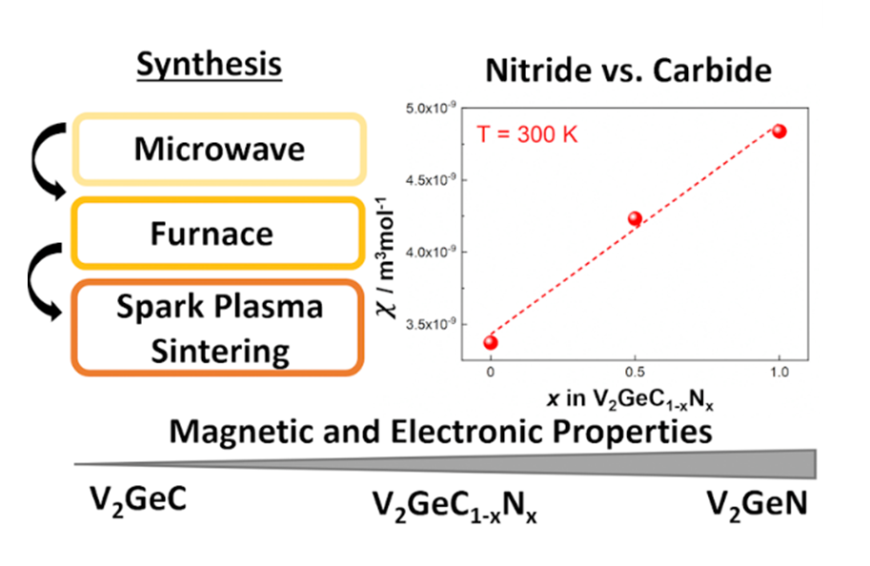Exploring the potential of nitride and carbonitride MAX phases: Synthesis, magnetic and electrical transport properties of V2GeC, V2GeC0.5N0.5, and V2GeN
New publication
2024/01/24

The chemical composition variety of MAX phases is rapidly evolving in many different directions, especially with the synthesis of carbides that contain two or more metals on the M-site of these layered solids. However, nitride and carbonitride MAX phases are still underrepresented and only a few members have been reported, that are for the most part barely characterized, particularly in terms of magnetic and electronic properties. Here, we demonstrate a simple and effective synthesis route, as well as a comprehensive characterization of three MAX phases, (i) V2GeC, (ii) the hitherto unknown carbonitride V2GeC0.5N0.5, and (iii) the almost unexplored nitride V2GeN. By combining a microwave-assisted precursor synthesis with conventional heat treatment and densification by spark plasma sintering, almost phase pure (carbo)nitride products are obtained. Magnetic measurements reveal an antiferromagnetic-paramagnetic-like phase transition for all samples in the temperature range of 160 K – 200 K. In addition, increasing the amount of nitrogen on the X-site of the MAX phase structure leads to a constant increase of the magnetic susceptibilities while the electrical resistivity is constantly decreasing. Overall, these findings provide crucial insights how to tune electronic and magnetic properties of MAX phases by only varying the chemical composition of the X-site. This further substantiates the demand for (carbo)nitride research with the potential to be extended to the remaining elemental sites within the MAX phase structure in order to push towards controlled material design and to achieve desired functional properties, such as ferromagnetism.
N. Kubitza, B. Beckmann, S. Jankovic, K. Skokov, A. A. Riaz, C. Schlueter, A. Regoutz, O. Gutfleisch, C. S. Birkel
Exploring the Potential of Nitride and Carbonitride MAX Phases: Synthesis, Magnetic and Electrical Transport Properties of V2GeC, V2GeC0.5N0.5, and V2GeN
Chem. Mater. (2024).
DOI: 10.1021/acs.chemmater.3c02510



